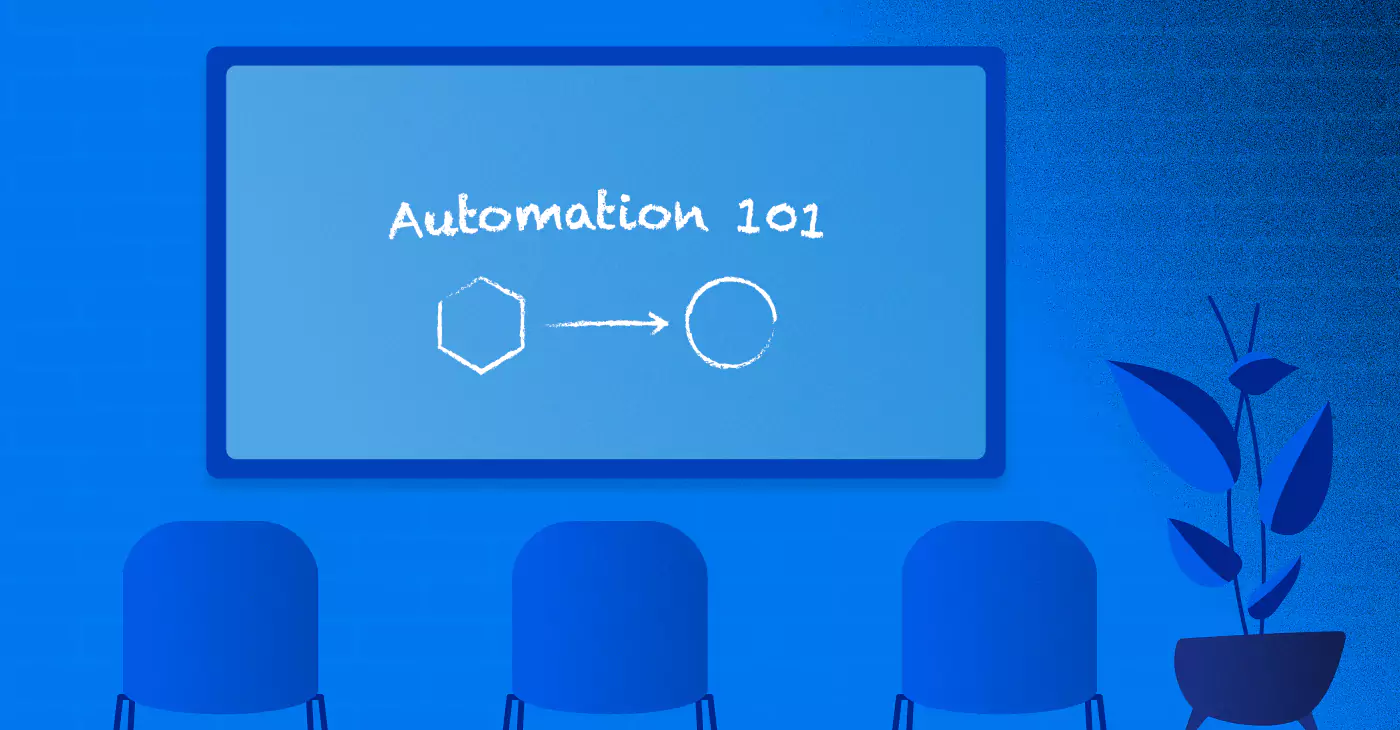Fear of Marketing Automation (#FOMA): Lack of Expertise or Know-How
January 16, 2018 7 min read

Starting the process of automating your marketing process can be daunting.
You’re used to personalizing your approach, and the idea of giving up that level of control likely makes you uneasy. However, automated doesn’t have to mean generic, and as you’ll see, there are plenty of ways to make marketing automation your own.
Businesses always need to keep up with evolving practices, and over time, automated marketing will be more consistent and efficient than the traditional variety.
Managers often avoid making the switch to automated marketing because of the associated uncertainty, but if you have a good understanding of the process, you’ll find that it’s much simpler than you imagined. The results are well worth the initial transition: Email Monday reported that 74% of companies said marketing automation has been either very beneficial or quite beneficial.
Marketing automation is effective for both B2B and B2C. Statistics from Act-On show that B2B marketers increase their sales-pipeline contribution by 10%, while B2C marketers who use automation have had it lead to conversion rates of up to 50%. Knowing in advance how to deal with some of the most common issues and setbacks will give you a leg up on the competition as you begin to automate your business’s marketing.
Applying Your Marketing Knowledge

Marketing automation seems like an unknown, but it involves the knowledge and expertise you’ve already built up through conventional marketing. While you’ll have to learn some new concepts, you have most of the tools you need to be successful.
If you typically write emails to new contacts, this is a great starting point for automation. Instead of personally writing emails after events, just have an automatic email triggered when a contact is added to the list—simply include the key points you would send to any new lead.
Automation can also be a key piece of moving your leads closer to a sale. While businesses often make repetitive sales calls or write emails to check in and follow up, automating this process accomplishes the same goal with a smaller time investment, giving you time to focus on what matters to you and your business.
In addition to efficiency, marketing automation also improves the consistency of your sales development. This allows you to pursue more leads with the same time investment for reliable results. By writing your emails beforehand instead of personally, you can take the time to ensure your brand and image are being communicated effectively to each potential client.
As opposed to continually calling or emailing leads to push them toward conversion, you can schedule automated emails to be triggered at certain times. These serve the same purpose as the conventional follow-up process with a smaller time investment, giving you more opportunities to expand your sales.
These are just a few examples of ways to replace your current marketing processes with automation—you know your business and market better than anyone else. Managers often overestimate the scope of the changes necessary and don’t realize that a lot can be accomplished with the knowledge and experience they already have. Automated marketing isn’t about changing your sales process. It’s about taking that process and making it even more efficient.
The Basics of Marketing Automation

The first thing you should focus on as you make the transition to automated marketing is setting clear goals.
The specific goals depend on your business and management style, but some examples include figures for revenue, market share, or new accounts. By measuring your newly automated marketing against what came before, you’ll have a better idea of what’s working and what needs to improve.
This step should align with the work you’ve already done on your current marketing strategies, rather than replacing them. Since traditional and automated marketing alike are meant to accomplish the same goals, many of the same ideas and philosophies apply. By checking your results periodically, you can see which areas are working and which ones aren’t, which will help you adapt your approach over time.
In fact, your goal-setting process should start with a review of your existing practices. Look at what’s effective and what isn’t, and identify areas to improve when you move to automated marketing. Keep your strengths prominent in your new approach while using the advantages of automation to address your weaknesses. Automated marketing is often more similar to conventional marketing than people assume, as it involves the same process of trying new things, evaluating them, and making adjustments.
Automated marketing offers a range of benefits compared to traditional marketing. In fact, according to Salesforce, companies with automation have a 53% higher conversion rate from marketing response to marketing qualified lead. However, that doesn’t mean you should implement it carelessly. It’s important to find the right tool for each part of the sales process—your marketing approach should be tailored to your business’ unique needs. Initial emails, for example, can often be automated with only minor adjustments, but there’s always going to be a place for personal communication, and there are some things that should be left as they are.
No automated marketing system is going to work perfectly from the start, so while you can anticipate some of the benefits and challenges, a lot of the fine-tuning takes place later on. Once you’ve had a chance to see how your new approach looks in action, you’ll be able to make changes. As time goes on, you’ll have a better idea of your market, so don’t be afraid to test out new ideas.
Just like regular marketing, your goal isn’t to come up with a single, perfect system. Even the best marketing strategies are constantly being tested and adjusted. The easiest way to see what changes are necessary is to regularly evaluate your current practices. Measuring your success quarterly, for example, will give you regular as well as year-over-year data to work off as you make adjustments. While this can seem like a challenge, businesses who push through the initial phase are almost always satisfied with the results: 91% of marketing automation users say that it’s very important to the success of their online marketing.
Marketing Resources
If you’re weighing the pros and cons of marketing automation, you’re not alone. There are numerous resources available to guide you through it.
These writers and managers have seen firsthand the advantages and potential pitfalls of automated marketing, so becoming familiar with their experience and advice will help you avoid falling into the same traps. As with any change, preparation is key—if you have an idea of what to expect, you’re more likely to make the right decisions for you and your business.
Neil Patel, one of the internet’s most prolific writers on marketing, has a guide intended to explain the ins and outs of marketing automation, from the basics to more minute details. He focuses on three main aspects of the automation: email marketing, social media, and landing pages.
In fact, Neil’s guide is in some parts a step-by-step walkthrough on how to implement the necessary changes. With email marketing, for example, he explains how he automatically share blog posts with subscribers. If you’re new to the world of marketing automation, this guide is a great place to start learning about both the possibilities of automation and how to use them to your advantage.
Another extremely comprehensive resource is Moz’s Beginner’s Guide to Marketing Automation. In contrast to Neil Patel’s, this guide focuses more on how and why it works the way it does. Some of the main concepts are explained in detail, and you’ll learn how to harness the best aspects of marketing automation while avoiding some of the most common negatives. It doesn’t spend as much time on the actual mechanics, such as how to use various marketing tools, instead of explaining each step of the process along with some tips and best practices.
WP Curve has a guide with an extremely helpful section on some of the key areas of marketing automation. For example, one issue that often comes up with marketing automation is a lack of personalization. The guide gives some advice on making sure your marketing comes off as genuine and unique rather than spammy or one-size-fits-all. Following those tips will make the transition to automated marketing even easier.
Tools like Zapier can help streamline your marketing automation by performing certain tasks for you automatically. It will allow you to schedule social media posts or emails, making them go out on their own at the right time, in addition to a wide range of other features. Zapier and other software are key pieces of automated marketing as they enable you to accomplish your goals with minimal oversight.
Conclusion
With recent increases in the availability, cost, and functionality of technology, marketing automation is now a unique opportunity for businesses to expand their reach without using unnecessary resources.
On average, users of marketing automation see a 3.1% higher revenue growth rate. However, it can also be tricky to work with and lead to unexpected results if not managed correctly.
By following the guidelines covered here, you’ll be well on your way to successful marketing, but in the end, nobody knows your business and market better than you. No matter how much you read, there’s no substitute for real-world experience and the process of trial and error. Don’t be afraid to try out your ideas—seeing what’s effective and what isn’t is the best way to improve.
Setting clear, measurable goals will help you determine whether you’re making sufficient progress or whether you need to make changes. You can connect with fellow marketers or use the resources available online to read and learn from others’ experiences.
This information should be enough to get you started, but marketing automation is an ongoing, constantly changing process. The best marketers are those who see their unique place in the market, stay ahead of the trends, and continuously adapt to new developments.



